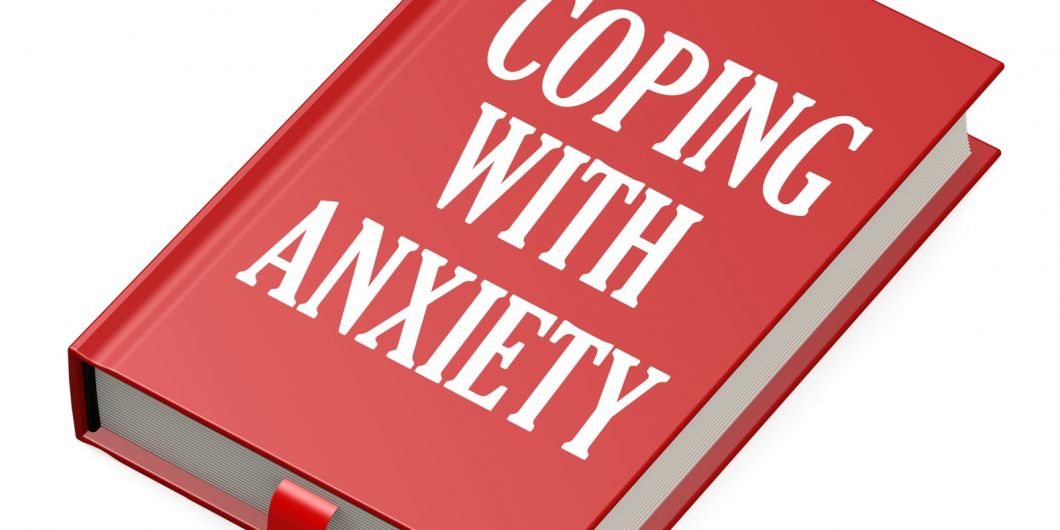Surviving an anxiety disorder

Everyone worries during their life. When it spurs you to take action to solve problems, worrying can even be helpful. However, if you are preoccupied with worst-case scenarios, and have a chronic case of the “what-if,” worry quickly becomes a problem. Unrelenting fears and anxious thoughts can be paralysing.
More...
They can deplete your emotional energy, send your anxiety levels through the roof, and interfere with your daily life. However, chronic worrying and anxiety is a mental habit that you can break free from. You can learn how to train your brain to stay calm and look at your life from a more balanced, less fearful perspective.
Worries, anxieties, and doubts are a part of everyday life. It is entirely natural to worry about an upcoming job interview, unpaid bill, or a first date.
However, “normal” worry will become excessive when it is uncontrollable and persistent. When you worry about different things every day and can’t get anxious thoughts out of your head, when your worry starts to interfere with your daily life, that’s when it becomes a problem.

Constant worrying, always expecting the worst, and negative thinking can take a toll on your physical and emotional health. It can leave you feeling jumpy and restless, result in insomnia, cause headaches, muscle tension, and stomach issues, and can make it extremely difficult to focus at school or work.
It can cause you to take your negative feelings out on others, self-medicate with drugs or alcohol, or try to distract yourself by zoning out in front of screens. Chronic worrying can also point to General Anxiety Disorder (GAD), which is a common anxiety disorder that involves nervousness, tension, and a general feeling of unease that affects your entire life.
Reasons You Might Worry Excessively
If you are someone who suffers from worries and chronic anxiety, the chances are good that you tend to look at the world around you in a way that makes it seem more threatening than it is.
For example, you may exaggerate the possibility that things will turn out badly, which causes you to jump to the worst-case scenarios immediately, or you may treat every anxious thought as though it were the reality.
Your anxiety may also discredit your own ability to handle your problems, assuming that you’ll fall apart at the first time of trouble. These pessimistic, irrational attitudes are known as cognitive distortions.

Why It’s So Difficult to Stop Worrying
While cognitive distortions aren’t based on reality, they can be challenging to give up because they’ve become a part of a lifelong pattern of thinking that has become so automatic that you aren’t even entirely aware of it.
You may think that by worrying you will eventually help you discover a solution to a problem or keep you from being surprised by experiences in the future. You might think that worrying protects you or even equate your worry about being responsible or caring. However, if you want to stop anxiety and worry for good, then you will need to learn how to give up the belief that your worrying serves a positive purpose.
When you can realise that your anxiety is the problem and not the solution, you can start to turn off the anxious thoughts and begin to regain control of your mind.
How to Stop Yourself from Worrying
Telling your mind to stop worrying doesn’t work. You can distract yourself for a bit, but you can’t banish anxious thoughts for good. Trying to do this can often make them more persistent and stronger.
Trying to stop your thoughts often backfires because it forces you to pay extra attention to all of the ideas that you are trying to avoid. It is something that you will always have to watch for, and this very emphasis on not thinking about your anxious thoughts makes them seem like they are even more critical.
Rather than trying to distract yourself merely, there are things that you can do to retrain your mind and change how it looks at the world.

Hit the Pause Button on Your Worrying Thoughts
If you tend to worry excessively, it might seem as though negative thoughts are running through your mind on an endless loop. You might feel as though you are going crazy, spiralling out of control, or about to burn out under the weight of your anxiety.
However, there are some things that you can do right now to hit the pause button on all the anxious thoughts running through your head and give yourself a break from the relentless anxiety.
Here are some ways you can take a break from the tense and worrying thoughts.
- Get up and get moving because exercise is an effective and natural form of treatment for anxiety. This is because it releases endorphins, which can help relieve stress and tension, boost energy, and enhance your sense of overall well-being.

- Take a tai chi or yoga class to focus your mind. By focusing your mind on your breathing and movement, you can keep your attention on the present and help to clear your mind of anxious thoughts, leading to a more relaxed state.
- Meditation works by shifting your focus from worrying about the future or dwelling on the past to what’s happening right now. It can help you interrupt the endless loop of negative worries and thoughts.
- Try deep breathing. Constant worry will make you anxious, which leads you to breathe faster, which can lead to even more anxiety. Deep breathing exercises can help you calm your mind and quiet those negative thoughts.
The above relaxation techniques can provide you with some immediate relief from anxiety and worry. When you practice them regularly, you can also change your brain. The more you practice, the more significant relief you’ll gain from anxiety and the more control you’ll begin to have over your anxious thoughts.
Talk About Your Worries
While it might seem like a relatively simple solution, talking face to face with someone you trust, someone who will listen to your worries without judgment or criticism, is one of the most effective methods for calming your nervous system and diffusing anxiety. When your anxiety and fears start to spiral, talking them over with someone can help make them seem far less threatening.
Keeping your worries and fears to yourself will only cause them to build until they seem overwhelming and uncontrollable. However, when you can say them out loud, it can often help you make more sense of what you’re feeling and help to put things in perspective.
Practice Mindfulness

Worrying is usually focused on what might happen in the future and what you’ll do about it, or it is focused on rehashing the things you’ve said or done in the past.
Mindfulness, the centuries-old practice of living in the now, can help you break free of your worry and anxious thought by bringing your attention back to the present moment.
This strategy is based on closely observing and acknowledging your fears and then letting them go. This helps you to identify where your thinking is causing problems and to help you to get in touch with your emotions.
The first step in practising mindfulness is to acknowledge and observe your worries. You want to try not to fight, ignore, or control your fears like you would usually do. Instead, you want to watch them as if you are looking on from an outsider’s perspective, without judging or reacting.
Next, you need to let your worries go. Take the time to notice that when you don’t try to control your anxious thoughts that enter your mind, they soon pass. It’s only when you engage in your worries that you end up getting stuck.
Finally, stay focused on the present.
Pay attention to how your body feels, the rhythm of your breathing, your changing emotions, and the thoughts that drift through your mind. If you find you are getting stuck on a particular thought, bring your attention back to the present.
Practising mindfulness to stay focused on the present moment is a simple concept, but it will take time and practice to see the benefits. You’ll probably find at first that your mind keeps wandering back to your worries.
Try not to get frustrated with this. Every time you draw your focus back to the present, you’re reinforcing a new mental habit that can help you overcome your anxiety.
Learn to Postpone Worry
It can be extremely tough to be productive in your daily life when worry and anxiety dominate your thoughts and distract you from school, work, or your home life. This is where postponing your worries can help.
Rather than trying to stop your worries or get rid of your anxious thoughts, permit yourself to have the concerns, but put off dwelling on them until later.
Choose a set time and place for embracing your worrying. You want to make sure to select the same time every day, but make it early enough in the day that it won’t interfere with your sleep.
During this period, you are allowed to worry about whatever is on your mind, leaving the rest of the day a worry-free zone.

To help you dismiss your anxious thoughts during your worry-free time, if an anxious thought or worry comes into your head, make a quick note of it and then continue with the rest of your day.
Remind yourself that you will have time to think about what is worrying you later. Writing down your thoughts is much harder than merely thinking them, so your worries are more likely to lose their power over you.
During your scheduled worry time, go over your list and allow yourself to worry about those anxious thoughts that continue to bother you. When you can examine your worries this way, you will often find it much easier to develop a more balanced perspective.
Distinguish Between Solvable and Unsolvable Worries
Productive, solvable worries are those worries that you can immediately take action on. For example, if you are worried about your bills, there are things that you can do today to help stop that worry.
On the other hand, unproductive, unsolvable concerns are those anxious thoughts that you have that don’t have a corresponding action, like, “What if my kids get into an accident?”
When it comes to your worries, you have to determine if they are ones that you can solve.
If your worrying thought is solvable, then you can start brainstorming actions to take. Make a list of all of the possible solutions, but try not to get hung up on finding the perfect solution.
Focus on the things that you can change, rather than the realities of circumstance that are beyond your control. Once you’ve determined your options, make a plan of action.
If the worry isn’t solvable, then you must accept the uncertainty. If you are a chronic worrier, the majority of your anxious thoughts probably fall into this area. Thinking about everything that could go wrong, doesn’t make life any more predictable.
Focusing on the worst-case scenarios will only keep you from enjoying the good things that you currently have in your life. To stop worrying, you need to tackle your need for certainty and immediate answers.
Conclusion
When usual worries turn chronic and start to interfere with your daily activities, it’s time to start taking action and finding a way to stop your worrying and anxious thoughts in their tracks.
The above strategies and techniques have been proven to be extremely useful in helping those with chronic anxiety or diagnosed anxiety disorder overcome their worry and anxious thoughts and take back their lives.
Overcoming your fear won’t happen overnight, but with time and practice, you can learn how to retrain your brain to stop allowing anxious thoughts to take over your life.







